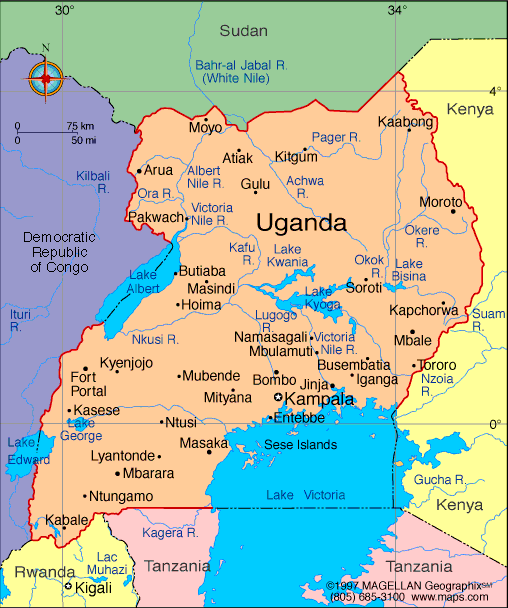Where We Work
Statistics
| Total population (2013) | 37,579,000 |
| Gross national income per capita (PPP international $, 2013) | 1 |
| Life expectancy at birth m/f (years, 2013) | 57/61 |
| Probability of dying under five (per 1 000 live births, 0) | not available |
| Probability of dying between 15 and 60 years m/f (per 1 000 population, 2013) | 380/307 |
| Total expenditure on health per capita (Intl $, 2013) | 146 |
| Total expenditure on health as % of GDP (2013) | 9.8 |
Latest data available from the Global Health Observatory WHO
25 Largest Cities in Uganda by Population
| Rank | Name | 2014 Census Population Count |
| 1 | Kampala* | 1,516,210 |
| 2 | Kira | 313,761 |
| 3 | Mbarara | 195,013 |
| 4 | Mukono | 161,996 |
| 5 | Gulu | 152,276 |
| 6 | Nansana | 144,441 |
| 7 | Masaka | 103,829 |
| 8 | Kasese | 101,679 |
| 9 | Hoima | 100,625 |
| 10 | Lira | 99,059 |
| 11 | Mbale | 96,189 |
| 12 | Masindi | 94,622 |
| 13 | Njeru | 81,052 |
| 14 | Jinja | 72,931 |
| 15 | Entebbe | 69,958 |
| 16 | Arua | 62,657 |
| 17 | Wakiso | 60,911 |
| 18 | Busia | 55,958 |
| 19 | Fort Portal | 54,275 |
| 20 | Iganga | 53,870 |
| 21 | Mpondwe | 51,018 |
| 22 | Kabale | 49,667 |
| 23 | Soroti | 49,452 |
| 24 | Mityana | 48,002 |
| 25 | Mubende | 46,921 |
The source of the population data is the Uganda Bureau of Statistics via Citypopulation.de, based on the August 2014 National Population Census.[1]



